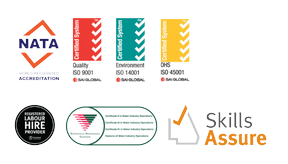How do you assess an on-site effluent disposal area?
We use the advanced modelling capabilities of MEDLI
- Would you like to model the capabilities of your on-site effluent disposal area?
- Would you like to understand the potential value in your irrigation area by assimilating effluent and producing a saleable crop?
- Would you like to optimise your contingency plan ahead of the coming La Nina by modelling the conditions of your irrigation area?
For nearly 60 years Simmonds & Bristow have been dedicated to making regional and remote water clear by any measure. To do this successfully for so many years, our teams have been dedicated to keeping up to date with the latest advances in science, engineering and technology to help you make good clean water for your community.
We have prepared a comprehensive summary how we use MEDLI and how it can work for you. Also known as, the Model for Effluent Disposal using Land Irrigation, MEDLI allows our Tech Services Teams to accurately and confidently model and assess on-site effluent disposal areas.
We are passionate about healthy on-site effluent disposal areas where soil and plants have a wonderfully simple way of returning waste and nutrients to harmless and even helpful substances and elements while diverting unsuitable nutrients from waterways. Using MEDLI we are able to provide accurate data analysis to help keep your on-site effluent disposal area thriving and in some cases profitable!
Using MEDLI, Simmonds & Bristow can provide you with a clear picture of suitable cash for crop options so you can make an informed decision and have confidence that the system we design meets your current, and future needs.
We will work with you to understand your effluent volume, available application area and overall environment before designing an effective irrigation to land system that can maximise your economic return.
The MEDLI software is able to collate data specific to the location, including climate, wastewater, soil and vegetation on site that allows different management options to be explored virtually. MEDLI provides confidence by accurately informing the implementation of on-site strategies such as site based management plans (SBMPs) or contingency plans for extreme weather events.
How does it work?
To conduct the modelling, typically we will request and gather a lot of data on:
- Climate conditions at the location. MEDLI uses location specific daily time step climate data for rainfall, temperature, pan evaporation, and solar radiation, is accessed in the required format from the Queensland Government’s SILO climate database.
- Wastewater characterisation (nitrogen, phosphorus and salt content)
- Flows
- Storage conditions (tank sizing, piping, inlets, and outlets)
- Irrigation area size
- sizing of the wet weather storage
- Irrigation application (eg sprinklers or subsurface drip line)
- Soil profiles within the irrigation area
- Vegetation types
- Harvest schemes (or mowing regime)
We then use this information to run a simulation of irrigation for between 50-100 years. Often we will run multiple simulation models with different variables to find the optimal solution for the site’s particular constraints. We then provide a MEDLI assessment report that supports and advises on the optimal irrigation scheme design and operational limits.
If your MEDLI is an assessment of an existing scheme, we will use the data to determine if there is likely to be an impact in the soil, vegetation or groundwater at the location.
What can MEDLI do for you?
Apart from new site establishment, a MEDLI model is likely to need to be completed if:
- A periodic assessment using MEDLI or equivalent is an Environmental Authority condition;
- A site upgrade is being planned that will increase a site’s waste flows beyond an existing EA threshold;
- There has been a struggle to comply with the limits set in a current EA and, as a result, the administering authority has ordered a soils assessment and a MEDLI model on the historical effluent quality and quantity to demonstrate any potential environmental impacts including localised climate data (such as flood and drought).
- There is a desire to see what more an irrigation area can do to assimilate effluent and what more can it produce (cash for crop)
Most importantly, MEDLI is the program recommended by Queensland’s Environmental Regulator when applying for approval of your effluent irrigation scheme. But MEDLI can benefit you even before submitting an application for approval. When you have Simmonds & Bristow perform MEDLI modelling for your site we can help you to determine the following information for designing or assessing your irrigation scheme:
- The required area of land needed to dispose of your effluent via irrigation (this varies based on your climatic conditions, the soil type of your site, and the vegetation, as well as the effluent quality).
- If you have a set area of land, we can tell you how much of your effluent you will be able to dispose of via irrigation, including the appropriate daily application rate.
- We can model the sustainability of your irrigation scheme to determine whether your effluent quality is likely to cause salinity accumulation within your soil profile, or whether there may be an excess of nutrients running off the site or leaching into the groundwater aquifer.
- We can help to determine the appropriate sizing of your wet weather storage.
- We can also determine the most sustainable crop or pasture to grow within your irrigation area; or we can work out what irrigation application rate is most appropriate for providing healthy crop/pasture growth and potential economic return.
Wastewater irrigation is a form of effluent disposal increasingly used by operations wherever the conditions are found to be suitable because it includes the added benefit of recycling water. The MEDLI modelling tool helps us make quality assessments to understand and design sustainable, site-appropriate wastewater to irrigation schemes.
This assessment gives the department confidence that they can approve the Environmental Authority and the conditions that should apply to that EA that allows the scheme to run sustainably. Alternatively, if a business has failed to meet its EA conditions, an assessment determines if they have little impact or a potential for a large impact on the scheme as a whole.






